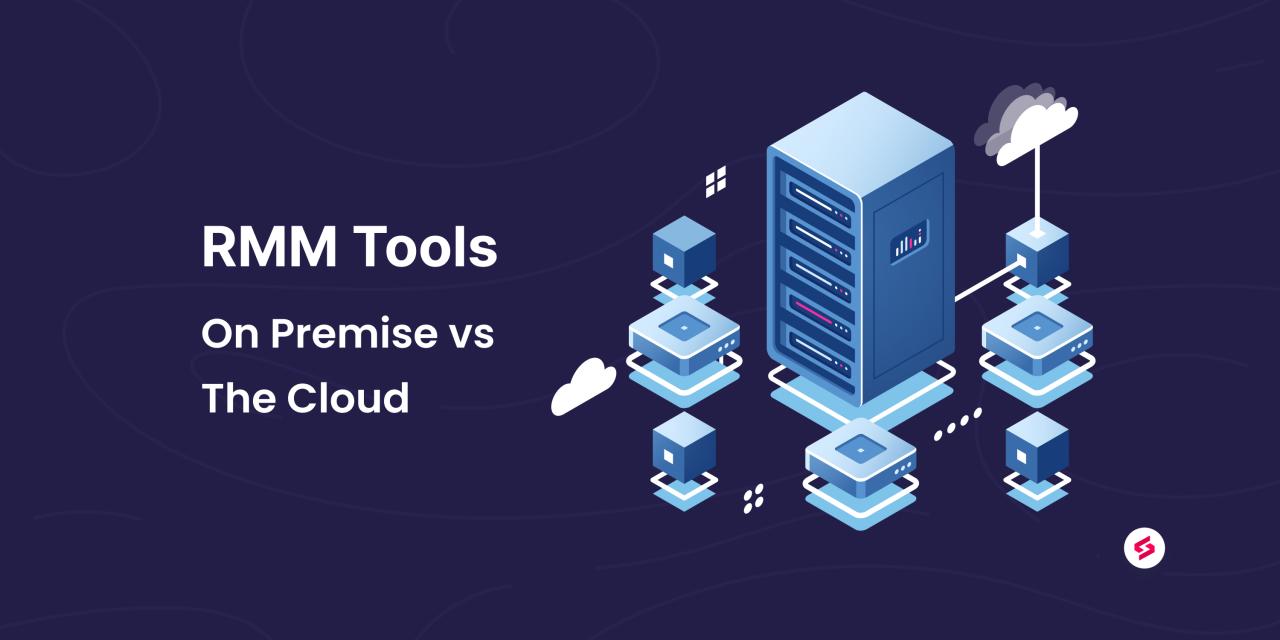Cloud based rmm – Cloud-based RMM, or Remote Monitoring and Management, is revolutionizing how businesses manage their IT infrastructure. This innovative approach leverages the power of the cloud to provide comprehensive monitoring, management, and automation capabilities, empowering IT teams to work smarter and more efficiently.
Table of Contents
Cloud-based RMM solutions offer a host of benefits, including enhanced security, improved performance, reduced downtime, and cost savings. By centralizing IT operations and providing real-time insights, these platforms empower businesses to proactively address potential issues before they escalate, ensuring seamless and uninterrupted operations.
Cost and ROI of Cloud-Based RMM

Cloud-based RMM solutions can significantly enhance IT management efficiency and security. However, understanding the cost factors and potential return on investment (ROI) is crucial for making informed decisions. This section explores the key considerations for assessing the financial viability of adopting a cloud-based RMM solution.
Cost Factors Associated with Cloud-Based RMM, Cloud based rmm
Implementing a cloud-based RMM solution involves various cost factors that businesses need to consider. These costs can be categorized into initial setup, ongoing maintenance, and potential additional features or integrations.
- Initial Setup Costs: Initial setup costs can include the initial subscription fee, hardware upgrades (if required), and professional services for implementation and configuration. The initial subscription fee can vary depending on the chosen RMM solution, the number of devices managed, and the specific features included.
- Ongoing Maintenance Costs: Ongoing maintenance costs include monthly or annual subscription fees, which may vary depending on the selected plan and the number of devices managed. Additional costs may arise from specific features, such as advanced reporting, remote control capabilities, or integrations with other IT tools.
- Potential Additional Costs: Additional costs may arise from specific features, such as advanced reporting, remote control capabilities, or integrations with other IT tools. Some RMM solutions offer tiered pricing plans, with higher tiers providing more features and functionalities. Additionally, some RMM providers may charge for training or support services.
Potential ROI from Cloud-Based RMM
Investing in a cloud-based RMM solution can generate significant ROI through various benefits, including improved efficiency, reduced IT costs, enhanced security, and improved customer satisfaction.
- Improved Efficiency: Cloud-based RMM solutions automate repetitive tasks, such as patch management, software updates, and security scans, freeing up IT staff to focus on more strategic initiatives. This automation can lead to significant time savings and increased productivity.
- Reduced IT Costs: By automating tasks and providing centralized management, cloud-based RMM solutions can reduce the need for on-site IT personnel, leading to lower labor costs. Additionally, the ability to proactively identify and resolve issues can prevent costly downtime and data breaches.
- Enhanced Security: Cloud-based RMM solutions offer comprehensive security features, including endpoint protection, vulnerability scanning, and malware detection. These features can significantly reduce the risk of cyberattacks and data breaches, protecting sensitive information and business operations.
- Improved Customer Satisfaction: By providing faster response times, resolving issues more efficiently, and minimizing downtime, cloud-based RMM solutions can improve customer satisfaction. This can lead to increased customer retention and loyalty.
Cost and ROI Considerations for Different Business Scenarios
The cost and ROI of a cloud-based RMM solution can vary depending on the specific business scenario. Here’s a table outlining key considerations for different business sizes and IT needs:
| Scenario | Cost Factors | ROI Considerations |
|---|---|---|
| Small Businesses (1-50 employees) | – Lower initial setup costs due to smaller device count – Subscription fees based on device count – Limited need for advanced features |
– Improved efficiency through automation – Reduced IT support costs – Enhanced security posture |
| Medium Businesses (50-200 employees) | – Moderate initial setup costs – Subscription fees based on device count – Potential need for advanced features like reporting and integrations |
– Increased productivity through automation – Reduced IT labor costs – Enhanced security through centralized management |
| Large Enterprises (200+ employees) | – Higher initial setup costs – Subscription fees based on device count – Significant need for advanced features, including reporting, automation, and integrations |
– Significant efficiency gains through automation – Reduced IT operational costs – Enhanced security and compliance through centralized management |
Conclusive Thoughts: Cloud Based Rmm
In today’s dynamic IT landscape, cloud-based RMM is no longer a luxury but a necessity. Its ability to streamline operations, enhance security, and optimize costs makes it an invaluable asset for businesses of all sizes. As technology continues to evolve, cloud-based RMM is poised to play an even more critical role in shaping the future of IT management.
Cloud-based RMM solutions are increasingly popular for managing IT infrastructure, offering remote access and monitoring capabilities. While you’re focused on managing your IT systems, you might need to convert an ePUB file to PDF for easier sharing or printing.
Consider using a reliable epub to pdf converter for this task, and then return to managing your cloud-based RMM environment with peace of mind.
